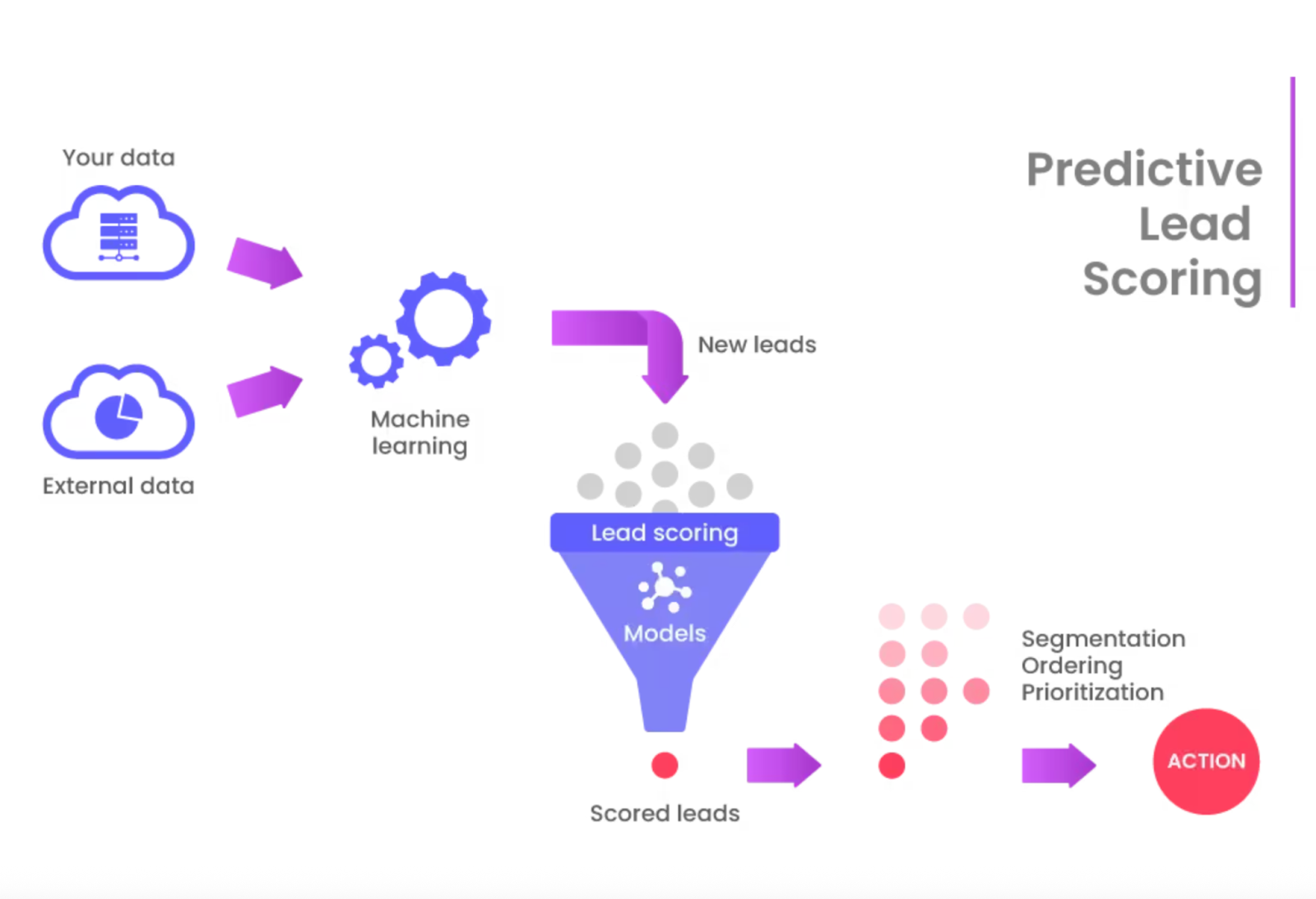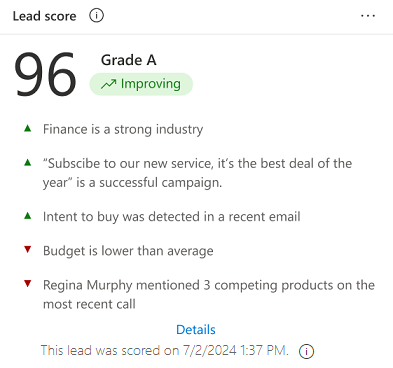Unlocking Growth with Predictive Lead Scoring
The success of any lead generation strategy depends on what happens after you collect a name. If your team is spending hours chasing contacts that never convert, you don’t have a lead problem, you have a prioritization problem.
Predictive lead scoring solves this by helping you identify the contacts most likely to buy. It uses historical data and machine learning to surface the right leads at the right time, so your team can focus on what’s actually moving the pipeline forward. No guesswork, no generic scoring rules—just clear, data-backed insight into which opportunities are worth your time.
Here’s how predictive lead scoring works and why it’s become a critical part of growth-focused sales and marketing strategies.
Quick Takeaways
- Predictive lead scoring uses data to identify which leads are most likely to convert.
- It analyzes patterns in your historical data, not just surface-level actions.
- Marketing and sales teams benefit from faster handoffs, better alignment, and stronger pipelines.
- The model updates continuously as new data comes in.
- Smarter targeting leads to higher ROI and more efficient growth.
What Is Predictive Lead Scoring?
Predictive lead scoring is a data-driven method of ranking leads based on their likelihood to convert. It analyzes large sets of historical data (past deals, behavioral signals, firmographic info, and more) to uncover patterns in who converts and why.
Once those patterns are established, the model applies them to new leads in real time. Each contact gets a score that reflects their closeness to your ideal customer profile, plus the behaviors and attributes that have historically led to successful deals.
Unlike traditional lead scoring, which relies on manually weighted rules (like assigning 5 points for a webinar signup or 10 for a demo request), predictive models learn from actual outcomes. That makes them faster, more consistent, and more accurate at identifying sales-ready prospects.
Here’s a high-level view of how predictive lead scoring transforms raw data into actionable insights teams can use to prioritize outreach.

How It Works
The core of predictive lead scoring is pattern recognition.
You start by feeding historical data into a model—typically including lead source, email engagement, job title, company size, industry, content downloads, and past conversion results. The model then evaluates which traits consistently correlate with closed deals.
From there, it builds a scoring framework based on real-world performance. When a new lead enters the system, the model instantly evaluates it against this framework and assigns a score based on how closely it matches proven success indicators.
As the model ingests more data, it continues to learn and improve. The result is a dynamic scoring system that reflects what actually drives conversions—not just what your team assumes.
Here’s what predictive lead scoring can look like in practice. Each lead is scored based on behavioral and contextual signals, then given a grade to guide next steps.

Benefits for Sales and Marketing Teams
When predictive lead scoring is done right, it creates real operational lift for both marketing and sales.
Smarter prioritization
Sales reps stop wasting time on unqualified leads. They focus on the contacts with the highest likelihood to convert, leading to faster, more productive outreach.
Aligned expectations
Marketing and sales teams often disagree on what a “qualified lead” looks like. Predictive scoring aligns both sides around clear, data-backed criteria that everyone can trust.
Faster handoffs
With confidence in the scoring model, marketing teams can pass leads to sales earlier without worrying about quality.
Higher ROI
By focusing time and budget on the right leads, teams reduce acquisition costs and increase the return on every campaign.
Real-Time Feedback and Continuous Learning
One of the biggest advantages of predictive lead scoring is how quickly it adapts. Unlike static models, predictive systems learn from every new data point—positive or negative.
If certain behaviors stop correlating with conversions, the model adjusts. If new customer types begin converting more often, those profiles are weighted higher. This real-time feedback loop ensures that your scoring system keeps pace with changes in buyer behavior, product focus, or market conditions.
It also gives teams a constant source of insight. You can see which traits and actions are driving results, then use that data to refine messaging, content strategy, or targeting criteria.
Driving Growth Through Smarter Targeting
When you can consistently identify which leads are most likely to convert, you can grow faster with fewer wasted resources.
Marketing teams use predictive lead scoring to guide segmentation and personalize outreach. Sales teams use it to build more focused pipelines and close deals faster. Leadership teams use it to allocate resources more strategically and improve forecasting accuracy.
It doesn’t just optimize your funnel—it expands what your team can accomplish without needing to hire more people or launch more campaigns. You get more lift from the same effort, and that kind of efficiency drives sustainable growth.
Take the Guesswork Out of Lead Prioritization with Televerde
Growth doesn’t come from casting a wider net. It comes from knowing which leads are worth your time and acting on that information with speed and precision.
Predictive lead scoring gives your team the visibility they need to stop guessing and start working smarter. With a model built on your actual conversion data—not generic rules—you can prioritize with confidence and keep your pipeline full of qualified, high-intent prospects.
Televerde helps B2B organizations turn lead data into real growth. With the right tools and strategy, we help teams focus on the right opportunities at the right time—and close more deals because of it.
Ready to prioritize the leads that drive results? Discover how Televerde helps B2B teams put predictive lead scoring into action so you can grow smarter, not harder. Explore our services.


